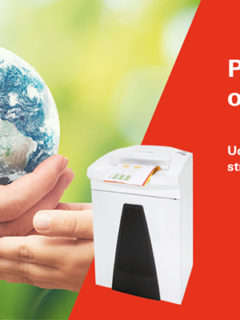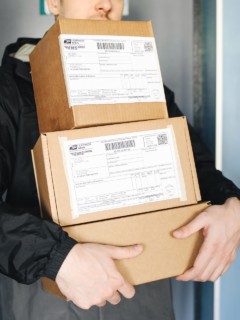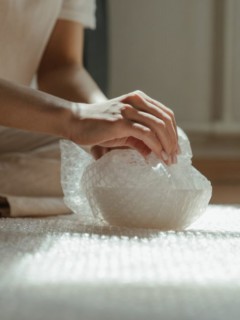Hose wraps are one of the universal products that can be used for a wide range of goods of any shape and weight. Are you wondering what the production of such a product, which is perhaps indispensable in some operations, actually looks like? We had the opportunity to get acquainted with the production during our personal visit to Verpa Folie, a German manufacturer of films.
The technology of the production process
And so it all begins: the first raw material needed is granulate in granular form. To be precise, these are macromolecules consisting mainly of hydrogen and carbon. A typical feature of plastics is their chain-like or network structure, which provides hardness and elasticity.
This granulate is mixed in a stationary mixing station with other additives that determine the desired properties, e.g. quality, colour, etc. Imagine that there are more than 1,000 types of polyethylene that can be blended to suit the future purpose of the film. The mixed material is conveyed to a production machine called an extruder, where it is thickened, homogenised, melted to a temperature of 240°C and condensed. With up to nine extruders and by combining the individual melts, it is possible to produce multi-layer films.
And now comes the exciting part: the molten polyethylene stream is pneumatically pushed into a round nozzle. This process produces a melt that is propelled by air to the top of the machine. A metre-long bubble rises up through the machine almost to the ceiling of the production hall – the hose film machine measures about 16 metres. That will really impress you! This long mass looks like a giant air balloon, with one major difference: the bubble created is made of liquid and especially hot PE. The melt is cooled inside and outside by air and cooling cylinders. The different air currents and the speed of inflation determine the thickness of the future film. A calibration basket is used to control the diameter of the plastic strip, determining the later film width. Thanks to the different calibration settings, different film widths can be produced continuously. When the film is fed to the top of the machine into the so-called extrusion head, it is still at a temperature of approx. 90°C. The final cooling is taken care of by a cooling ring which is part of the head. This allows the film to be fixed in the shape in which it is later folded and wound by the winding rollers. This creates an almost endless tubular film which is further processed.
Processing of residual material
Environmental considerations are also taken into account during production. All scraps, defective pieces and cut ends of the films are collected and reprocessed into granulate in special machinery. All small residues are melted, concentrated and homogenised in the extruder. The mass is then crushed. This machine can be likened to a learned ‘meat grinder’. After cooling, the regranulate is used as standard in the production process. The recovered material can not only be used in the production of films, but also applied as raw material for the production of bin liners and construction films. This is advantageous from an environmental and cost point of view. Reuse is more efficient than disposing of production waste or buying new granulate.
Author Radka, Marketing Department














